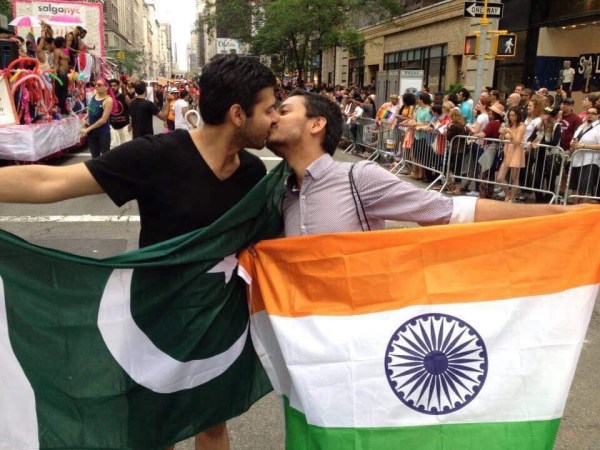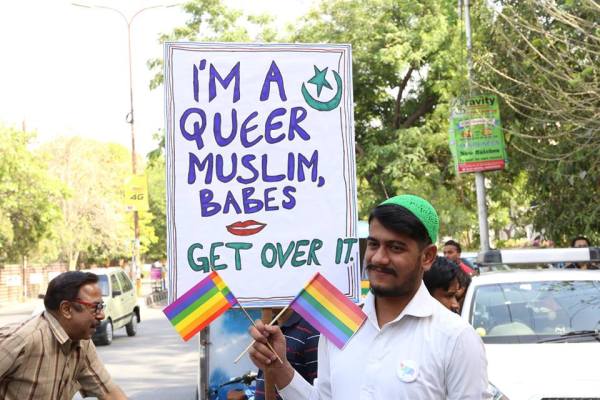The Perils and Politics of Gay Pride by Udayan Dhar, Editor-in-Chief of www. pink-pages.co.in, India’s National LGBT magazine, and a Senior Researcher currently based out of Ashoka University, India. Views expressed are personal. Author’s blog – udayandhar.blogspot.com
Perhaps the Ongoing Controversy over Pune Pride March Hints at a Maturing LGBT Movement in India
June is LGBT (Lesbian, Gay, Bisexual & Transgender) Pride month globally and the last decade has seen Indian cities participating in this celebration of diversity in a big way. Apart from the large metropolitan cities, what is truly encouraging is that smaller cities and towns across the country have started joining the movement in a way never seen before. Among them, Pune is a city that has made good progress on this front- with Pride marches, queer film festivals and panel discussions bringing together an increasingly visible and vibrant local LGBT community.
The Troubles in Pune
It was a shock therefore, that just about a week ahead of the planned Pune Pride march there have been a volley of voices both online and offline calling for boycotting the event. The provocation has been the organising team’s “guidelines” to would-be participants. These include a prohibition on dancing, beating of drums, or wearing “eccentric and flamboyant” clothes. They also have to “behave well” and not attract “unnecessary attention.”
And many members of the Pune queer community are understandably upset. “If you are asking people to dress a certain way, it is similar to dictating to women how to dress modestly”, said one community member. Online, people have been more candid. “#PunePride should be renamed as #DiscriminationPride”, posted someone. Things have not been helped by the fact that the organizers are being perceived as conservative and uncompromising. “Why don’t you organise your own Pride and do your own Nanga Naach?” was the response Bindumadhav Khide, the lead organiser posted on Facebook as a response to the controversy.
Getting the Context Right: Pune’s LGBT movement
One factor needs to be clarified right at the start- Bindumadhav has been one of the trailblazers for the LGBT rights movement in India. He was working in the United States as a Software Engineer, and about fifteen years ago, he decided to return to India to pursue a cause close to his heart- LGBT equality. Since then, he has faced multiple challenges- after all, Pune is no San Francisco or New York- or even New Delhi or Mumbai for that matter.
From hostile civic officials to financial crunches, he singlehandedly set up the Sampathik Trust and has been operating it ever since out of a small office in Budhwar Peth. It remains one of the most impactful LGBT organisations in India that has battled on multiple fronts- from HIV/AIDS prevention to sensitising the local Police on homosexuality and transgender issues. The trust has published a series of books in Marathi language that have enabled a conversation to take place even in the most conservative circles of the city. The impact is for all to see- the city has been organising successful Pride marches and festivals for the past six years now. The sensitisation programs initiated by Bindumadhav and his team were apparent some years back when Pride participants were greeted with flowers by none other than the Police staff themselves.
It is also true that the Pune Pride has been seen for some time within the community as an expression of the more conservative side of the movement. One blog post by a supportive community member says, “… it gives a platform to the assimilationist queer individual, be it the man who only wants to go home to his husband and eat some khichdi before plopping into bed, the woman who travels in the packed local to visit her ailing mother-in-law in the hospital while her wife goes home to have a bath and get some sleep… Not everyone wants to be the centre of political attention, or have to make a point with their presence. At least not all the time. Pune Pride represents the vast swathe of queer individuals who want life to be ordinary. Who want their gender and sexuality to be immaterial to people around them.”
The History of Gay Militancy
With the global movement for LGBT equality – with issues like same-sex marriage now dominating headlines- it often becomes hard to believe that it had its origins in the most radical expressions of queer sexuality in America. The 1960s saw gay and genderqueer Americans increasingly flock to mostly underground pubs and bars – which were seen as havens for individuals from diverse backgrounds. They soon began to identify themselves as part of a larger alternative community that was distinct in many ways from the mainstream. These bars were often the target of police raids and punitive action, but one night in June 1969 when the New York Police targeted Stonewall Inn, the patrons fought back in what became known as the Stonewall Riots- which was marked the following year with a “Pride March”.

Credit: Anonymous, via Facebook
These Pride marches began to spread across North America and Europe, and became rallying points for a whole host of issues around gender and sexuality – from decriminalisation to anti-discrimination laws. Importantly, the queer movement- on account of the inherent diversity of the queer community became closely involved with causes which were not directly related to sexuality. For example, when gay marchers walked in support of the coal miners in Thatcherian Britain, or when two men kissed at the New York Pride march holding Indian and Pakistani flags, or when three brave Dalit men came out openly at the Delhi Pride shattering the twin taboos of caste and homosexuality.
All this has been happening in tandem with a parallel movement within the gay community to go as “mainstream” as possible. The idea is that the LGBT community- especially gay men need to tone down their overt displays of sexuality in order to be eligible for the rights that they are asking for. This idea gained currency in the wake of the AIDS crisis in San Francisco and New York- with vociferous demands by leaders such as Larry Kramer to shut down bath-houses that were termed cess-pools of degraded behaviour and fatal diseases.
Not surprisingly, the critiques were harsh as well. Michael Warner’s celebrated book, “The Trouble with Normal” is a powerful indictment of all that is wrong with the trend to ‘normalize’. He argues that when gays agree to separate their sex from their identity, they are only rewarded with oppressive trends like stricter zoning of gay clubs and businesses, the ‘Don’t Ask/Don’t Tell’ policy in the military and, ironically, the ‘Defense of Marriage’ act. By presenting a piercing and cogent analysis of the politics of shame and the stigma of sexual identity, he offers an alternative ethical vision that proclaims “sex is as varied as the people who have it, and honesty and morality are not limited to those with a marriage license.”
The Way Ahead in Pune, and the Future of the Queer Movement in India
Coming back to the ongoing furore in Pune, it is not surprising – given the fraught history of the gay rights movement across the world- that such a controversy should emerge in the first place. The fact that such issues have rarely boiled over in the past only pointed to the limited scope of the work that has happened on this front in India so far. The different voices – those belonging to the “assimilationists” on one hand, and the “liberationists” on the other are an integral part of ongoing evolution of the global queer movement and should be seen as such.

to build broad alliances across the social spectrum of
India, Credit: Darvesh Singh
Those calling for the boycott of Pune Pride should bear in mind that the work Bindumadhav and the Sampathik Trust have done over the years have happened within a certain cultural context, and active participation in the ongoing movement should foster the change they rightfully envision. LGBT people exist in every community, every class and every caste. The collective voice of the marginalized can not remain unheard within any democratic forum for too long.
At the same time, the Pride organisers need to urgently realise that the support given to them from most community leaders in this instance hinges on the personal credibility of Bindumadhav and the huge respect he commands on account of his work so far. As the movement grows larger with participation of more diverse and hitherto underrepresented sections, this would not be enough to sustain its continued growth and impact. That will come only from creating inclusive spaces where people from the widest cross-section of the social and sexual spectrum come together to create meaningful change.
This is also a time for the LGBT community in India – still reeling under the damaging effects of the Victorian Section 377- to reflect on what are the wider goals and objectives of the movement? Do we want to create another upper crust of rich and privileged gay men (and some women), who speak English, receive the best education and have opportunity-filled corporate careers, who can then worry about “gay marriage”, while our community spaces remain excluded to the vast majority who have no means to buy the expensive tickets to our city’s gay clubs and have no access to our plush professional networks.
Or, do we want to build a broader alliance with the multitude of passionate and freedom-loving individuals and groups – queers, women, workers, teachers, students, Dalits, Adivasis, minorities – across the length and breadth of India (and indeed South Asia), who are working to create an equitable and inclusive nation that the founding fathers of our nation- luminaries like Gandhi, Nehru and Ambedkar- had envisioned. A nation where, in the words of Tagore, every mind is without fear, and every head is held high.
This article has been republished by kind permission of https://pink-pages.co.in
© Udayan Dhar


